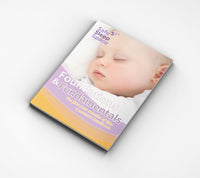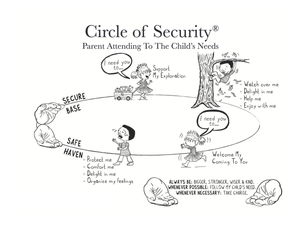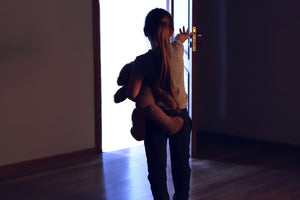How can I get my toddler to sleep in their own bed?

Most toddlers and young children want to sleep with their parents at some point during their lives. The specifics of when, why and how vary, however, it’s normal and very common for parents to have at least one small child sharing their bed at some stage.
For many parents, choosing to co-sleep fits with their overall parenting philosophy of having their children close at all times. Others are often firm in their resolve not to co-sleep and find themselves surprised that they start. Exhaustion is often the reason why parents can relent to sharing their bed with their toddler. Not to mention the capacity for toddlers to be very determined in getting what they want.
Why children want to sleep with their parents
Small children are driven by strong biological needs. Even from birth, they are programmed to build an emotional attachment with the people who are most likely to ensure their survival. As humans, we are more vulnerable at night, so it makes sense that young children want their parents to be close and protect them if needed.
Of course, small children don’t have the vocal capacity to explain why they want to be in close proximity. It’s only through crying and protests that they can communicate their wants.
Is it a problem for children to sleep with their parents?
Co-sleeping with babies and young children increases the risk of SUDI – Sudden Unexplained Death in Infancy. According to safe sleeping recommendations, the safest place for babies to sleep is in their own safe cot, in their parent’s room for the first 6-12 months of life.
If parents do choose to co-sleep, there are a number of recommendations which may help to make this safer. Check here for tips for safer co-sleeping with a baby.
10 Ways to encourage your toddler to sleep in their own bed
- If you decide that having your toddler sleep with you is no longer sustainable and you’d like to make some changes, ensure your partner is on the same page. Toddlers are very good at working out ‘the path of least resistance’. If one of you is softer than the other, they’re more likely to be inconsistent. Talk in the day time about the ways you’re going to manage your toddler’s sleep. Middle of the night discussions are not ideal.
- Make a plan and do your best to stick with it. Be prepared for your toddler to protest and be unhappy about the change in sleeping arrangements. Remember the concepts of COS – Circle of Security and always be bigger, wiser, stronger and kind. Sometimes as parents, we need to assume those ‘take charge’ moments while responding to your child’s emotional needs.
- Follow a regular pre-bed settling routine with your toddler. Dinner, bath, PJs, teeth cleaning and stories are a great lead up to bed. Aim for a bed time of around 7 pm, but be flexible and look for your toddler’s-tired cues.
- Tuck your toddler into their own bed and stay with them until they’re calm. You have choices about sitting on a chair beside their bed or even in the doorway. What’s useful is to stay until they’re calm and aim to leave before they’re fully asleep. Offering parental presence while they drift off to sleep can offer your toddler a sense of security while they are adjusting to sleeping in a new sleep space.
- Follow a similar pre-sleep routine for all sleeps, both day and night.
- If your toddler wakes during the night and comes to your room, it is important to gently guide them back into their own space by holding their hand and then once in their room offer them a short sleep message such as "it is time for sleep in your bed now".
- Make sure your toddler’s bed is a comfortable, warm and happy place so they’ll want to be there.
- Tell your toddler what you’d like them to do. For example, “Lie on your bed, put your head on your pillow, it’s sleep time”.
- Praise your toddler with positive language when they stay in their own bed all night. Using positive reinforcement such as a stamp on their hand that they can show to other family members or carers the next day also works well. This gives your toddler a real sense of pride and achievement when they can explain to others they received the stamp because they “...slept in their big bed all night”.
Be prepared to
- Provide consistent and predictable cues when supporting your toddler to sleep in their own bed. Offering consistent short sleep messages helps them understand that they can be supported while learning a new approach to sleep. "One more cuddle together and then into your bed with teddy".
- Praise your toddler when they are lying in their own bed and they don’t climb out. Tell them that they’re doing a “good job lying on your bed”.
- Become doubtful that you’re doing the right thing. It’s easy to feel guilty and unsure about our parenting decisions, especially at the end of a long day, or the middle of the night. However, loved, well fed toddlers who are developing as they need to, do not suffer any ill effects from learning to sleep in their own bed.
- Offer your toddler a comfort toy which they can cuddle when they go to bed however always follow Red Nose Guidelines.
- Develop a range of settling skills which includes verbal reminders, patting, shshing and soothing your toddler as they learn to settle and resettle when they wake overnight.
- Consider using a night light to help them feel more secure.
- Be consistent. Some toddlers take a few weeks to learn how to sleep in their own bed, needing a lot of reminders and to be taken back to their own bed.
What to avoid
- Getting into long winded explanations about why your toddler is in their own bed now. Keep your instructions calm, reassuring but brief.
- Using a complex system of white noise, red lights, shshing machines and devices to encourage your toddler to sleep. Sleep onset is supported by the removal of stimulus, not adding lots of noise/light into the room.
- Setting up a mattress on the floor of their room for you to sleep on. This is an easy habit to start and a hard one to break.
- Climbing into their bed with them. Remember, the goal is to support them to sleep in their own bed, not substitute the beds where you both sleep.
For more information about sleep management, check Safe Sleep Space. Alternatively, you can speak with your Child Health Nurse about ways to encourage your toddler to sleep in their own bed.
About the Author:
Written for Safe Sleep Space by Jane Barry. Jane has qualifications in general, paediatric, immunisation, midwifery and child health nursing. She holds a Bachelor Degree in Applied Science (Nursing) and has almost 35 years specialist experience in child health nursing. She is a member of a number of professionally affiliated organisations including AHPRA, The Australasian Medical Writer’s Association and Australian College of Children and Young People’s Nurses.
References
Co-sleeping with your baby | Red Nose Australia
Responsive feeding and settling video series | Ellen Barron Family Centre (health.qld.gov.au)
Sleep Consultants | Baby & Toddler Sleep Experts – Safe Sleep Space








